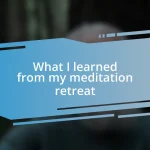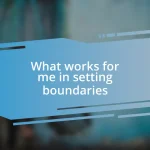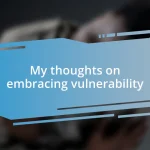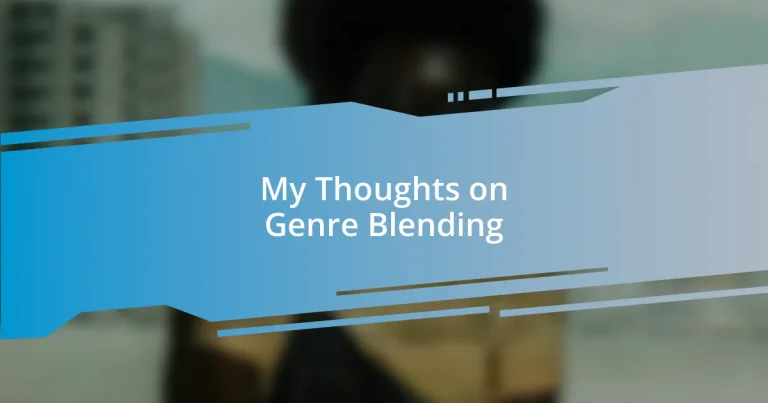Key takeaways:
- Genre blending enhances storytelling by allowing deeper character development and unexpected emotional connections, resulting in more engaging narratives.
- Key techniques for successful genre blending include finding common ground, experimenting with narrative structures, and integrating thematic elements from different genres.
- Common pitfalls include losing the distinct voice of each genre, risking audience alienation, and plot confusion when genres diverge too drastically.
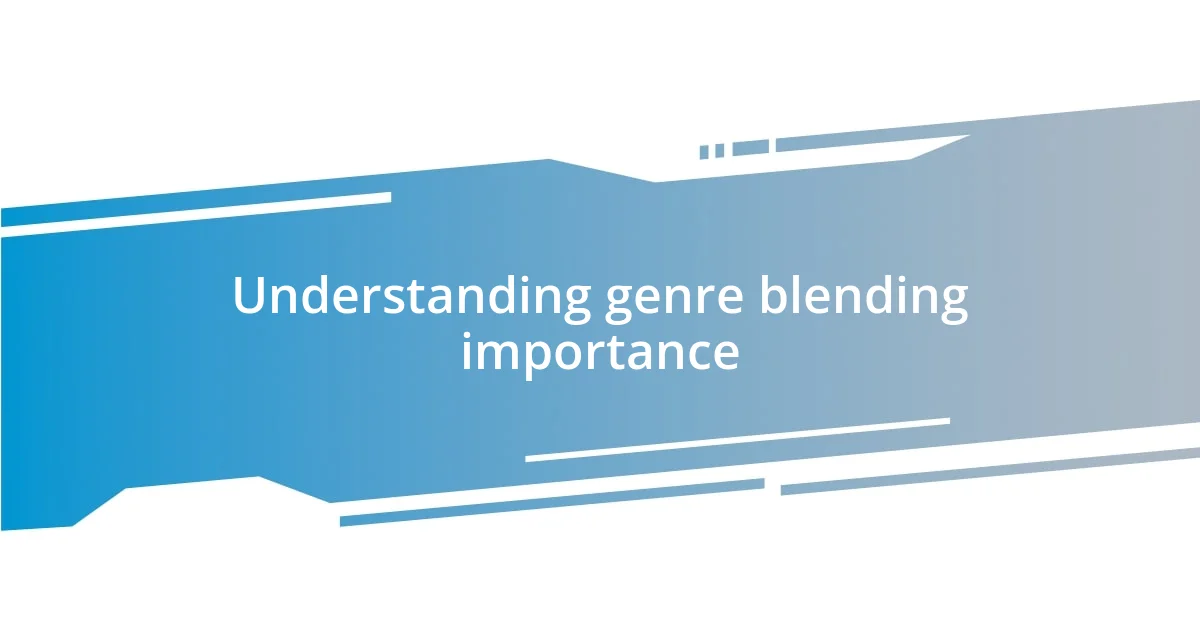
Understanding genre blending importance
Genre blending is a fascinating aspect of storytelling that can breathe fresh life into traditional narratives. I remember reading a novel that effortlessly combined elements of science fiction with historical fiction. It made me wonder: how often do we limit ourselves by strictly adhering to genre conventions? By blending genres, we allow for a more nuanced exploration of themes, creating a richer experience for readers.
When I first stumbled upon a horror-romance novel, it felt like a revelation. The tension between fear and love added depth to the characters, making their struggles resonate on a personal level. This taught me that genre blending isn’t just about mixing styles; it’s about weaving together emotions and ideas that wouldn’t typically coexist. We can create unexpected connections that lead to profound insights, pushing the boundaries of what stories can accomplish.
Moreover, genre blending opens the door for creativity, inviting writers to break free from the constraints of conventional storytelling. I often find myself excited by stories that refuse to be pigeonholed. Isn’t it exhilarating to read something that surprises you and makes you think? The blending of genres invites innovation and exploration, encouraging both writers and readers to embrace a more expansive worldview.
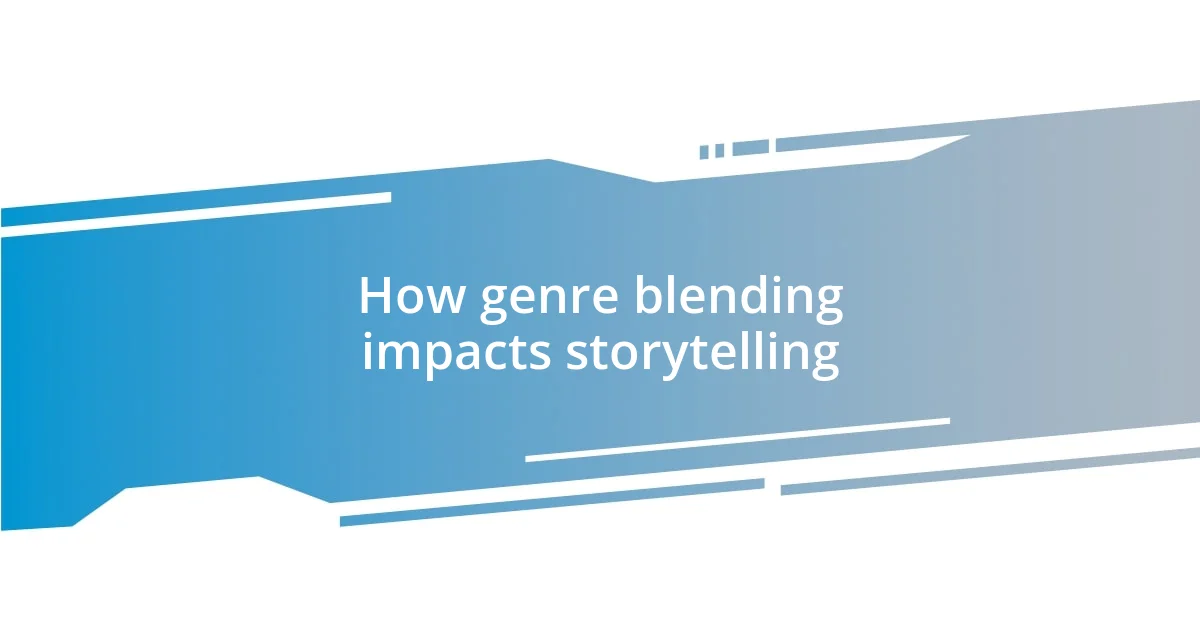
How genre blending impacts storytelling
Blending genres can truly transform the storytelling experience. I recall watching a film that seamlessly fused elements of comedy and thriller—it had me laughing out loud one moment and holding my breath the next. This unpredictable mix heightened my emotional investment in the characters’ plights. It’s like adding spices to a favorite dish; a little surprise here and there can elevate the whole experience.
- It allows for deeper character development by introducing varied motivations and conflicts.
- Readers and viewers become more engaged as they navigate the tension created between contrasting themes.
- The unexpected pairing can challenge preconceived notions about familiar genre conventions.
When I think about my own writing, I often experiment with blending fantasy and real-life issues. Crafting a story where magical elements reveal profound truths about society has led to some of my most rewarding feedback from readers. They often express how these unexpected intersections resonate with their own experiences, reminding me how genre blending can facilitate a deeper connection to universal themes.
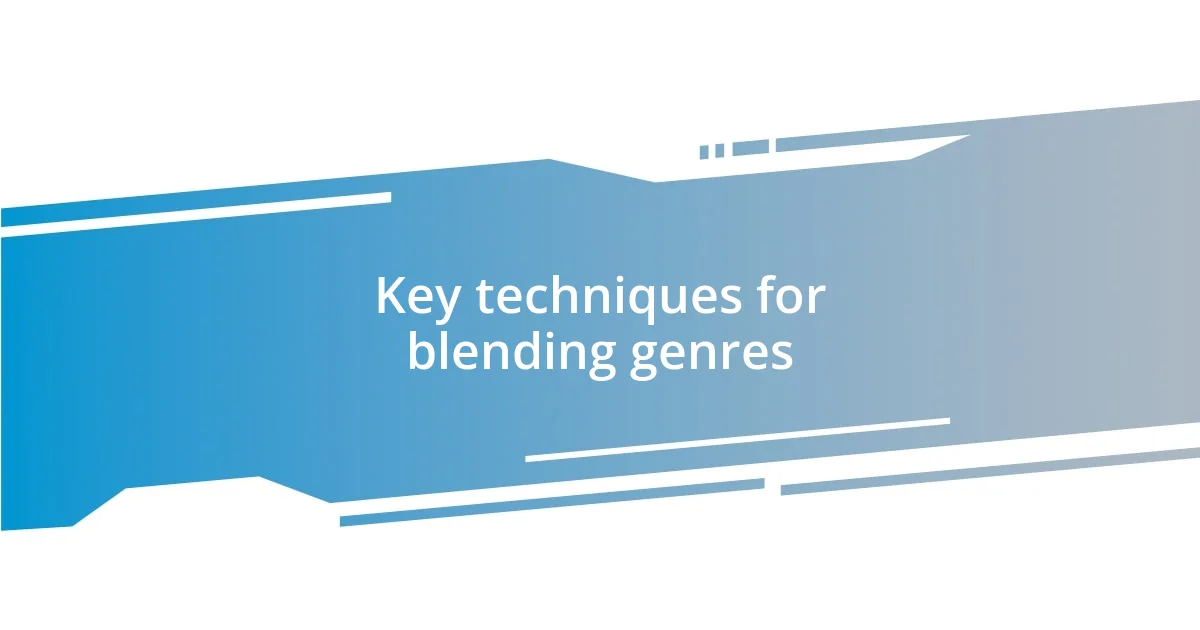
Key techniques for blending genres
When it comes to blending genres, I find that the key lies in finding common ground between disparate elements. For instance, merging mystery with romance can create an intriguing tension that keeps readers guessing while tugging at their heartstrings. I once attempted a short story that combined elements of a detective novel with a love story, and the interplay between unraveling a crime and developing relationships added layers of complexity I hadn’t anticipated. It reminded me how vital it is to ensure the genres complement each other instead of competing for attention.
Another effective technique is to experiment with narrative structure and point of view. I’ve noticed that switching between a first-person and third-person perspective can bring a fresh dynamic to the readers’ experience. For a particular story I wrote, I integrated a fantasy world through a third-person narrator while allowing a character’s personal struggles to unfold in the first person. This approach not only emphasized the character’s journey but also crafted a vivid contrast with the wider world, enriching the overall storytelling. It’s fascinating how such narrative shifts can immerse readers more deeply into the experience.
Lastly, weaving thematic elements from different genres can create a cohesive yet unpredictable narrative. I once explored themes of identity through a horror setting. By using chilling elements to delve into the character’s fear of being perceived differently, I was able to evoke nuanced emotional responses from readers. I genuinely believe that when genres intersect, the thematic depth can surface in ways that feel surprising yet resonate deeply with personal experiences and collective truths.
| Techniques | Description |
|---|---|
| Finding Common Ground | Identifying shared themes that support the intertwining of genres enhances storytelling depth. |
| Narrative Structure Experimentation | Utilizing varying perspectives or structures enriches reader engagement and adds complexity to the narrative. |
| Thematic Integration | Blending themes from different genres offers a platform for more profound emotional exploration. |
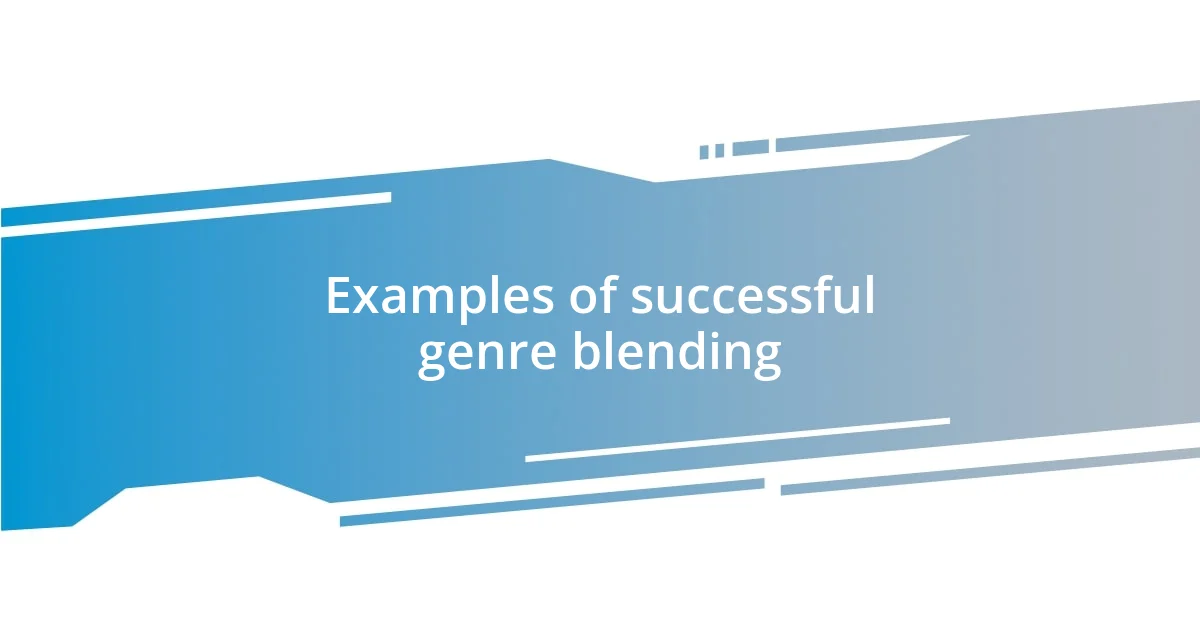
Examples of successful genre blending
One shining example of successful genre blending is The Shape of Water. This film combines aspects of romance, fantasy, and even horror. I remember watching it and feeling this deep sense of connection to the characters, especially the unlikely love story between the mute woman and the amphibious creature. It sparked a thought in me: can the blending of such disparate genres allow for a deeper understanding of love and acceptance in our own lives?
Another intriguing case is Neil Gaiman’s American Gods, which weaves together elements of fantasy, mythology, and even road narratives. Engaging with this book made me reflect on my own cultural background, as Gaiman brings old gods into the contemporary world, forcing a confrontation between tradition and modernity. I found myself asking, how do our beliefs shape our identity in today’s society? His clever blend of genres opened my mind to the juxtaposition of what was once revered and how it exists now.
Let’s not overlook the realm of video games, particularly The Last of Us, which skillfully combines post-apocalyptic fiction with survival horror and even touches of character-driven drama. As I witnessed the evolving relationship between Joel and Ellie, it was hard not to feel a surge of empathy wash over me. It made me realize that mixing genres can lead to more than just entertainment—it can evoke powerful emotions and provoke thought about human connections in the face of adversity. Have you ever felt a game reflect your own resilience? I know I have.
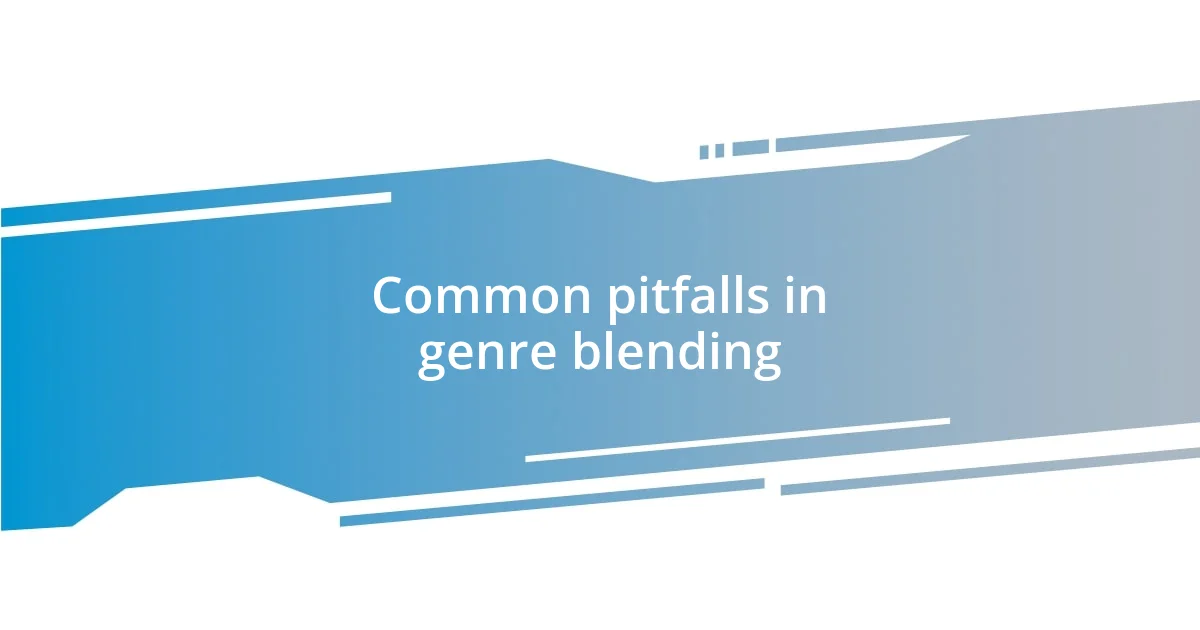
Common pitfalls in genre blending
When blending genres, one of the most common pitfalls is losing the distinct voice of each genre. I remember when I was attempting to mix horror and comedy in a story. It was quite challenging to ensure that both elements shone through rather than overshadowing one another. The laughter would often diffuse the tension I wanted to build, leaving readers confused about the story’s intent. Have you ever experienced that feeling, where a joke just seemed to ruin the moment? Finding that balance requires a careful hand, as you want to evoke both laughter and chills without diluting either influence.
Another challenge I’ve faced is the risk of audience alienation. For instance, while writing a science-fiction romance, I found myself deeply immersed in intricate technological details. Unfortunately, my focus on world-building sometimes turned readers off, as they struggled to relate to the emotional stakes amidst the complexity. It served as a reminder that clarity is key; after all, you want readers to connect, not feel lost. Have you ever picked up a book only to put it down because it felt too foreign? I think the best genre blends invite readers into a space they can recognize.
Lastly, there’s the danger of plot confusion when genres diverge too drastically. In a recent project where I fused thriller elements with historical fiction, I noticed readers became bewildered by unexpected shifts between timelines. I had to ask myself, how could I create a seamless flow that made sense in both contexts? It reminded me that maintaining a cohesive narrative thread is vital; without it, even the most creative blends can leave audiences scratching their heads. Have you ever had a reading experience where the plot felt like a tangled mess? I know that frustration all too well.
